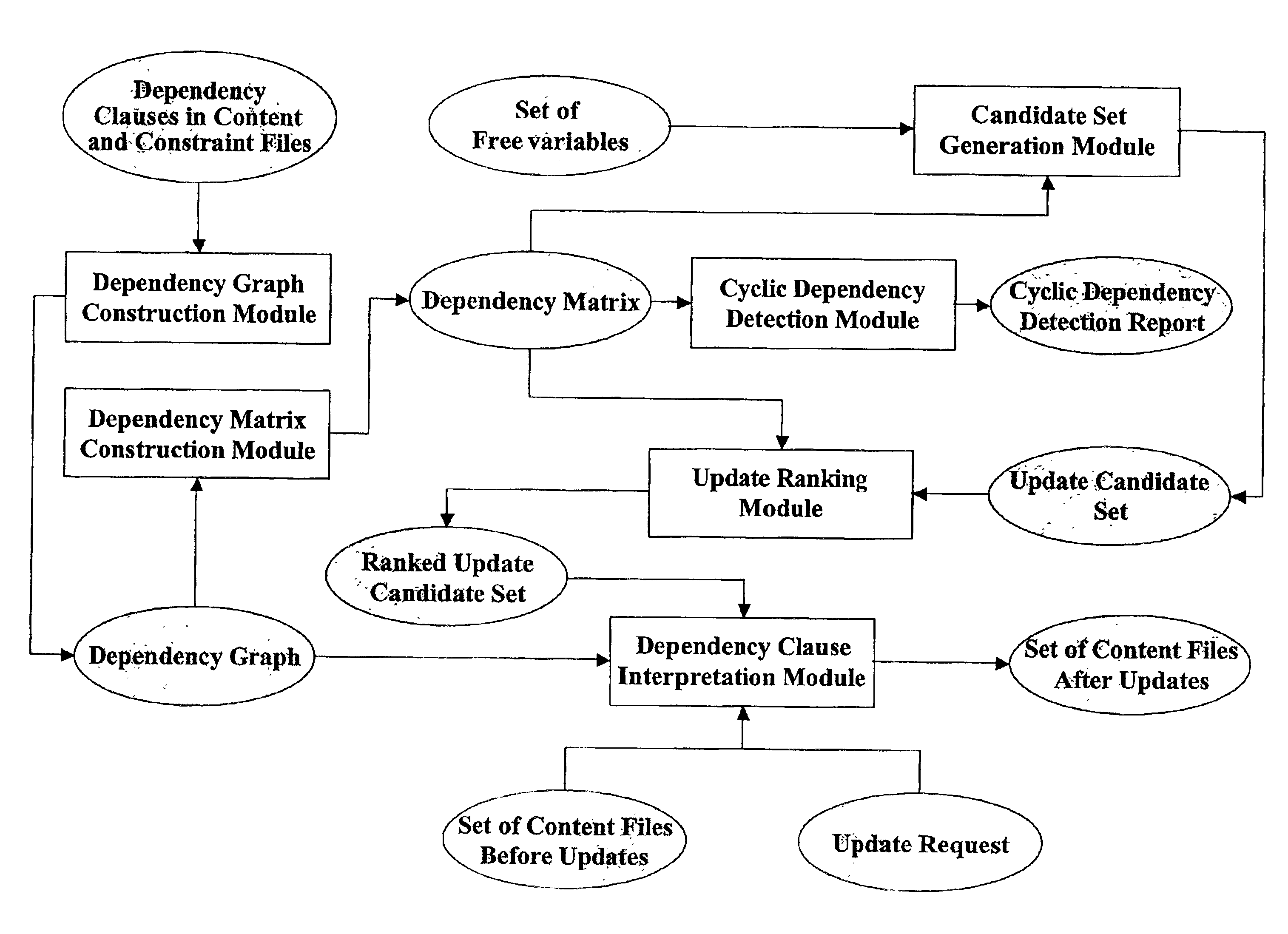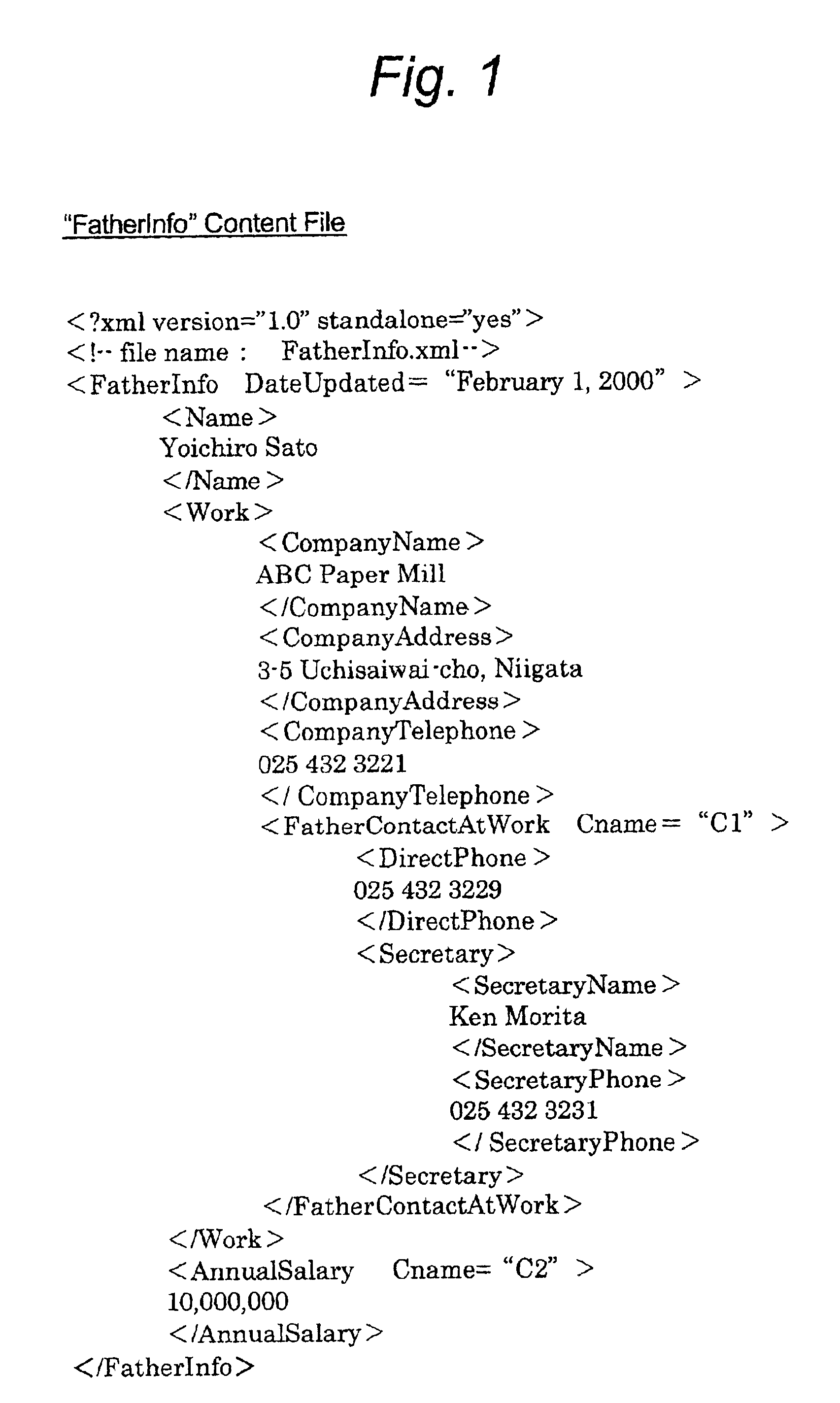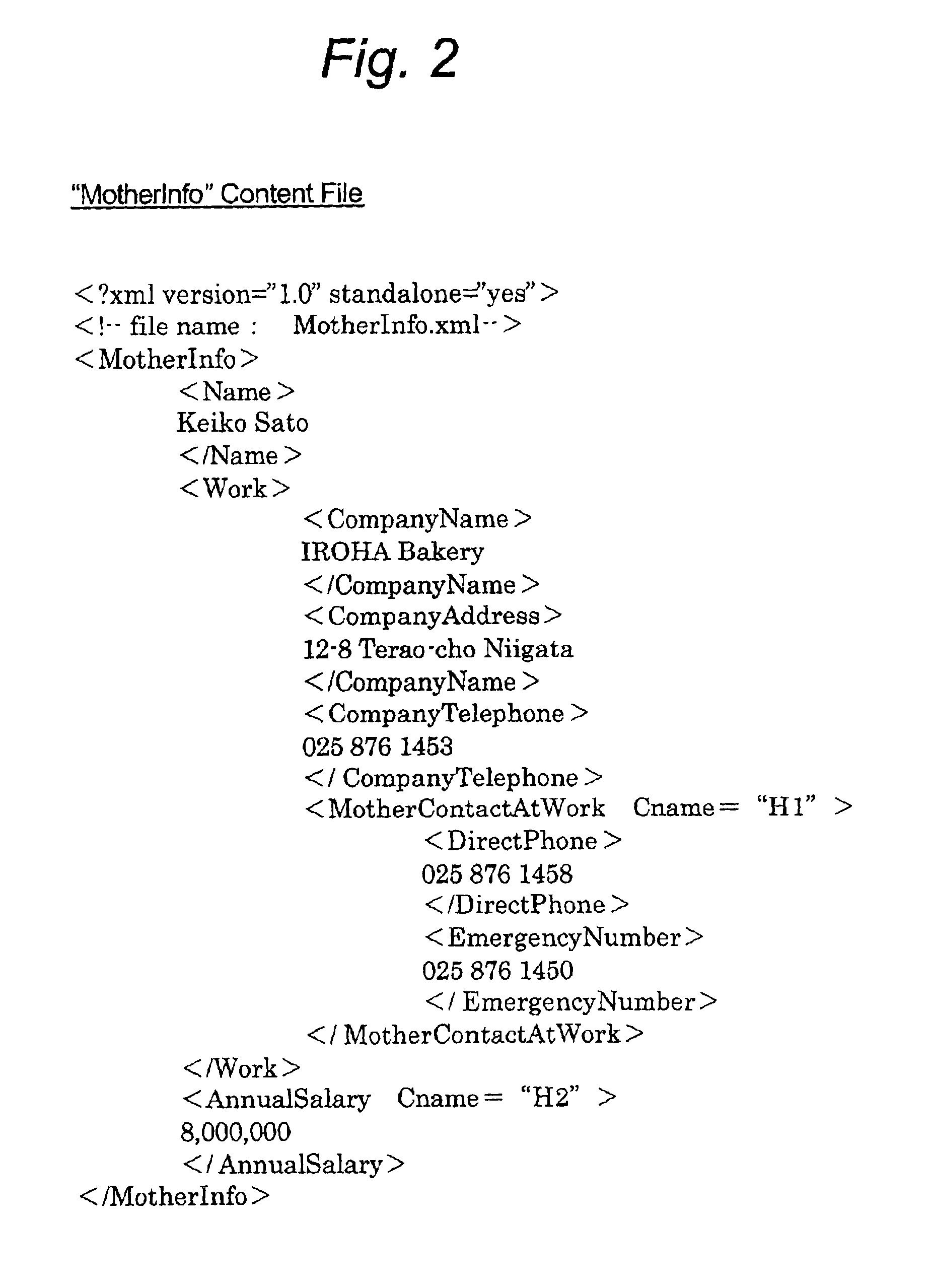System for managing networked information contents
a networked information and content technology, applied in memory systems, web data retrieval, instruments, etc., can solve the problems of inability to directly represent such dependency relationships, inability to maintain their representational independence from specific implementations, and rigid information systems, so as to improve the way in which dependency relationships are created, facilitate sharing of dependency relationships, and increase flexibility in modifying dependency relationships
- Summary
- Abstract
- Description
- Claims
- Application Information
AI Technical Summary
Benefits of technology
Problems solved by technology
Method used
Image
Examples
Embodiment Construction
nition of a functional dependent variable;
[0029]FIG. 8 is anther example of a constraint file;
[0030]FIG. 9 is an example of a content net in which dependency relationships among elements are specified in a single file which is separate from Web documents representing information contents;
[0031]FIG. 10 is an example of a content net that is given as a collection of pairs of a content file and its constraint file;
[0032]FIG. 11 is an example of a station;
[0033]FIG. 12 is an example of a station net; and
[0034]FIG. 13 shows a form of the content net update propagation system.
DETAILED DESCRIPTION OF THE INVENTION
[0035]A “content net” is a collection of Web documents having dependency relationships among their elements. It is assumed that dependency relationships among document elements in a content net are given representations that permit a computer-based interpretation and evaluation.
[0036]Elements which are involved in one or more dependency relationships in a content net are called “a...
PUM
 Login to View More
Login to View More Abstract
Description
Claims
Application Information
 Login to View More
Login to View More - R&D
- Intellectual Property
- Life Sciences
- Materials
- Tech Scout
- Unparalleled Data Quality
- Higher Quality Content
- 60% Fewer Hallucinations
Browse by: Latest US Patents, China's latest patents, Technical Efficacy Thesaurus, Application Domain, Technology Topic, Popular Technical Reports.
© 2025 PatSnap. All rights reserved.Legal|Privacy policy|Modern Slavery Act Transparency Statement|Sitemap|About US| Contact US: help@patsnap.com



